The Band...
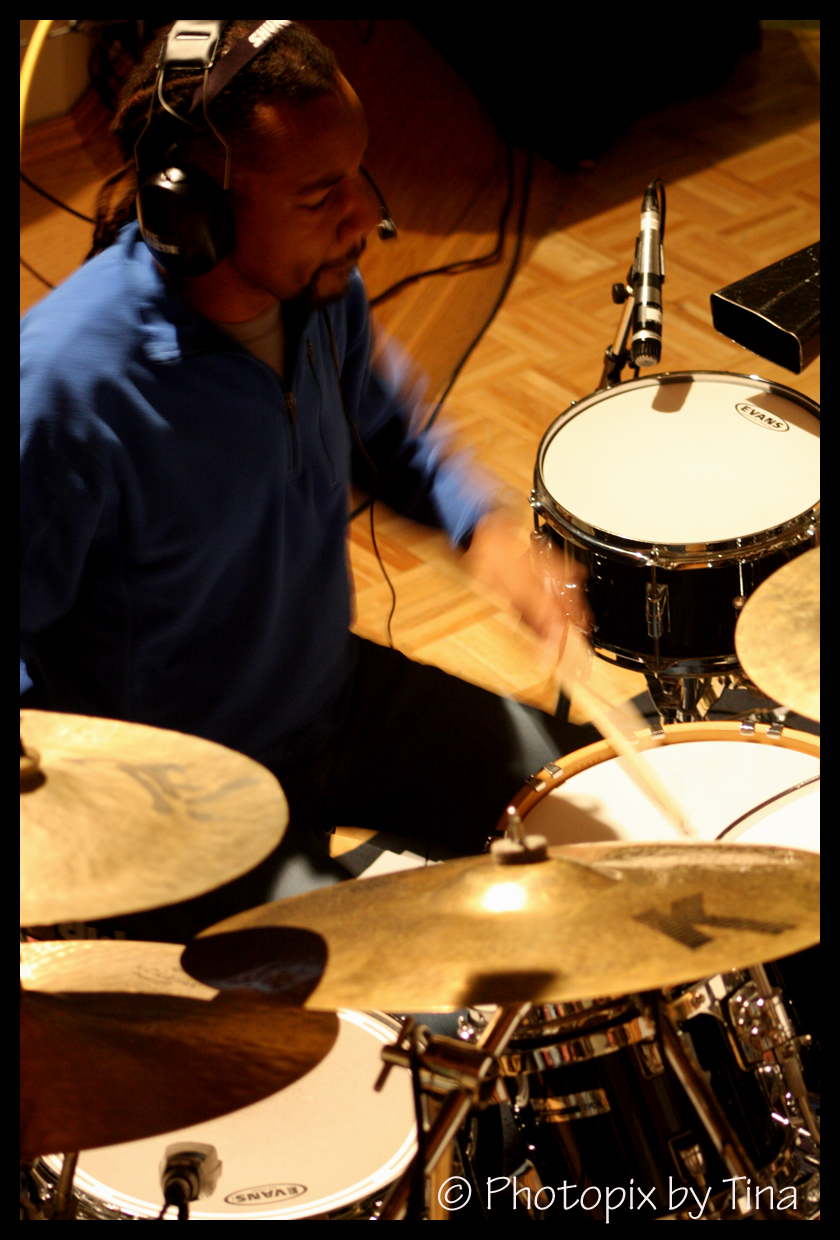 Aubrey Dayle was born in Kingston, Jamaica. He
immigrated to Canada with his family, and was raised in Montreal. He
began playing the accordion at age 5 and from there learned to play the
piano. By the age of 13, Aubrey had developed an interest in the
percussive arts and decided to devote his talents to mastering them.
His efforts paid off and a decade later, he was performing and
collaborating with some of the best musicians on the planet.
Aubrey Dayle was born in Kingston, Jamaica. He
immigrated to Canada with his family, and was raised in Montreal. He
began playing the accordion at age 5 and from there learned to play the
piano. By the age of 13, Aubrey had developed an interest in the
percussive arts and decided to devote his talents to mastering them.
His efforts paid off and a decade later, he was performing and
collaborating with some of the best musicians on the planet.
While in Canada, Aubrey finished a Bachelor of Music degree in
classical percussion performance at McGill University. He performed in
both the Vanier and the award winning McGill Percussion Ensembles.
Aubrey also began his professional career during this period,
performing on both jazz and classical radio broadcasts for the CBC, and
touring throughout Eastern Canada.
Soon after, Aubrey graduated from the Manhattan School of
Music in New York City. It was at this time he became fully committed
to his development as both a drummer and a composer. He also started to
tour extensively with James 'Blood' Ulmer and Hassan Hakmoun. The James
“Blood” Ulmer Blues Experience toured the globe playing mostly jazz and
blues festivals. Hassan Hakmoun and Zahar played mostly World music and
rock festivals. The latter ensemble also performed at “Woodstock '94”
and was the warm-up group for several of singer Peter Gabriel's
concerts during his Secret World and Womad tours.
Aubrey has continued to perform in varied situations. He has
toured the United States extensively with the jam band groups God
Street Wine and The John Popper Band. He appeared on “The Tonight Show
with Jay Leno”, “The Late Show with David Letterman”, and “The Roseanne
Show” with The John Popper Band in support of John Popper's solo album
entitled “Zygote”. Aubrey continues to record and tour with guitarist
Vernon Reid in the group Memphis Blood. This group was nominated for a
Grammy award with for the CD entitled “Memphis Blood, The Sun Sessions
featuring James Blood Ulmer” and selected for one of 2003's best albums
by Rolling Stone Magazine for the CD called “No escape from the Blues,
James Blood Ulmer, The Electric Lady Sessions”. Most recently, Aubrey
has recorded with Memphis Blood in New Orleans on the bands upcoming CD
called “Bad Blood in the City , The Piety Street Sessions”. The CD was
released on May 8, 2007.
Many high profile artists have worked and played with Aubrey
since he became a New York-based freelance musician. His diverse
experience has allowed him to perform with Garland Jeffreys, Sam
Rivers, Sonny Rollins, Peter Gabriel, David Murray, Chico Freeman and
Ernest Ranglin among many others. He has also worked on “Bring In Da
Noize, Bring In Da Funk” as a Broadway musician.
Aubrey’s discography includes Angie Stone’s Mahogany Soul, God
Street Wine’s Good To The Last Drop and Hassan Hakmoun’s most recent CD
called The Gift. He has also performed on several television broadcasts
in the United States and Europe. Aubrey is currently working with
musicians in Canada and the United States to tour in support of his
solo CD project called My id. It is on the My id project that Aubrey
combines his influences in jazz, rock and world beat and truly stakes
his claim as an artist of the 21st century.
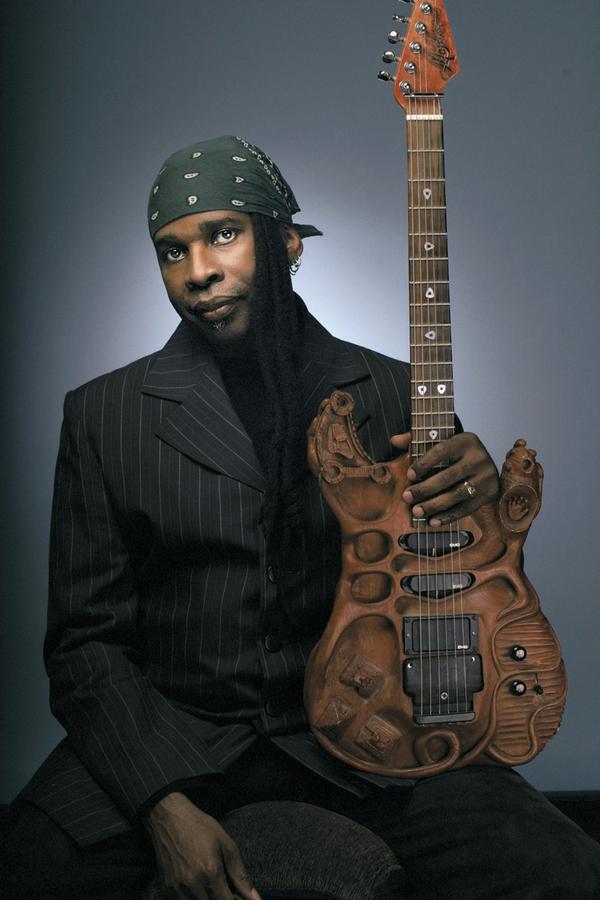 Vernon Reid was born in London, England August
22, 1958 but spent most of his childhood in Brooklyn, New York. He grew
up listening to an eclectic variety of pop music ranging from Dionne
Warwick's hits to the Temptations. As a guitarist of the Decoding
Society, Mr. Reid mastered the harmolodic theories of Ornette Coleman
and spent his time gigging with a wide array of artists ranging from
pop producer Kashif to the jazz-punk-dance band Defunkt. Living Colour
began as a trio in 1984, releasing five albums: the ground breaking
“Vivid” (1988), “Times Up” (1990), the EP “Biscuits” (1991), “Stain”
(1993) and the latest “Collideoscope” (2003). With over four million
records sold worldwide, the band has won numerous awards including two
Grammy awards, two MTV Music Video Awards, two International Rock
Awards and several New York Music Awards.
Vernon Reid was born in London, England August
22, 1958 but spent most of his childhood in Brooklyn, New York. He grew
up listening to an eclectic variety of pop music ranging from Dionne
Warwick's hits to the Temptations. As a guitarist of the Decoding
Society, Mr. Reid mastered the harmolodic theories of Ornette Coleman
and spent his time gigging with a wide array of artists ranging from
pop producer Kashif to the jazz-punk-dance band Defunkt. Living Colour
began as a trio in 1984, releasing five albums: the ground breaking
“Vivid” (1988), “Times Up” (1990), the EP “Biscuits” (1991), “Stain”
(1993) and the latest “Collideoscope” (2003). With over four million
records sold worldwide, the band has won numerous awards including two
Grammy awards, two MTV Music Video Awards, two International Rock
Awards and several New York Music Awards.
Mr. Reid has produced, recorded and performed with James Blood
Ulmer’s Memphis Blood Blues Band. Through his involvement with this
project, he began working with Drummer/Composer Aubrey Dayle. In 2008,
he joined forces with Dayle’s group “My id” for a live recording and
live performances.
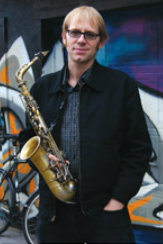 Richard Underhill’s fantastic sound,
composition skills and improvisational ability make him one of the most
artistically recognizable artists in Canada. His 2003 CD entitled
“Tales from the Blue Lounge” earned him a Juno Award, followed by
another Juno award in 2008 for his “Kensington Suite” CD. Richard has
worked with a vast array of artists including the likes of Rob
McConnell, Molly Johnson, Blue Rodeo, Colin James, Hawklsey Workman,
Alex Lifeson, Taj Mahal and many others. He is also a founding member
of one of Canada's most cherished groups, the Shuffle Demons.
Richard Underhill’s fantastic sound,
composition skills and improvisational ability make him one of the most
artistically recognizable artists in Canada. His 2003 CD entitled
“Tales from the Blue Lounge” earned him a Juno Award, followed by
another Juno award in 2008 for his “Kensington Suite” CD. Richard has
worked with a vast array of artists including the likes of Rob
McConnell, Molly Johnson, Blue Rodeo, Colin James, Hawklsey Workman,
Alex Lifeson, Taj Mahal and many others. He is also a founding member
of one of Canada's most cherished groups, the Shuffle Demons.
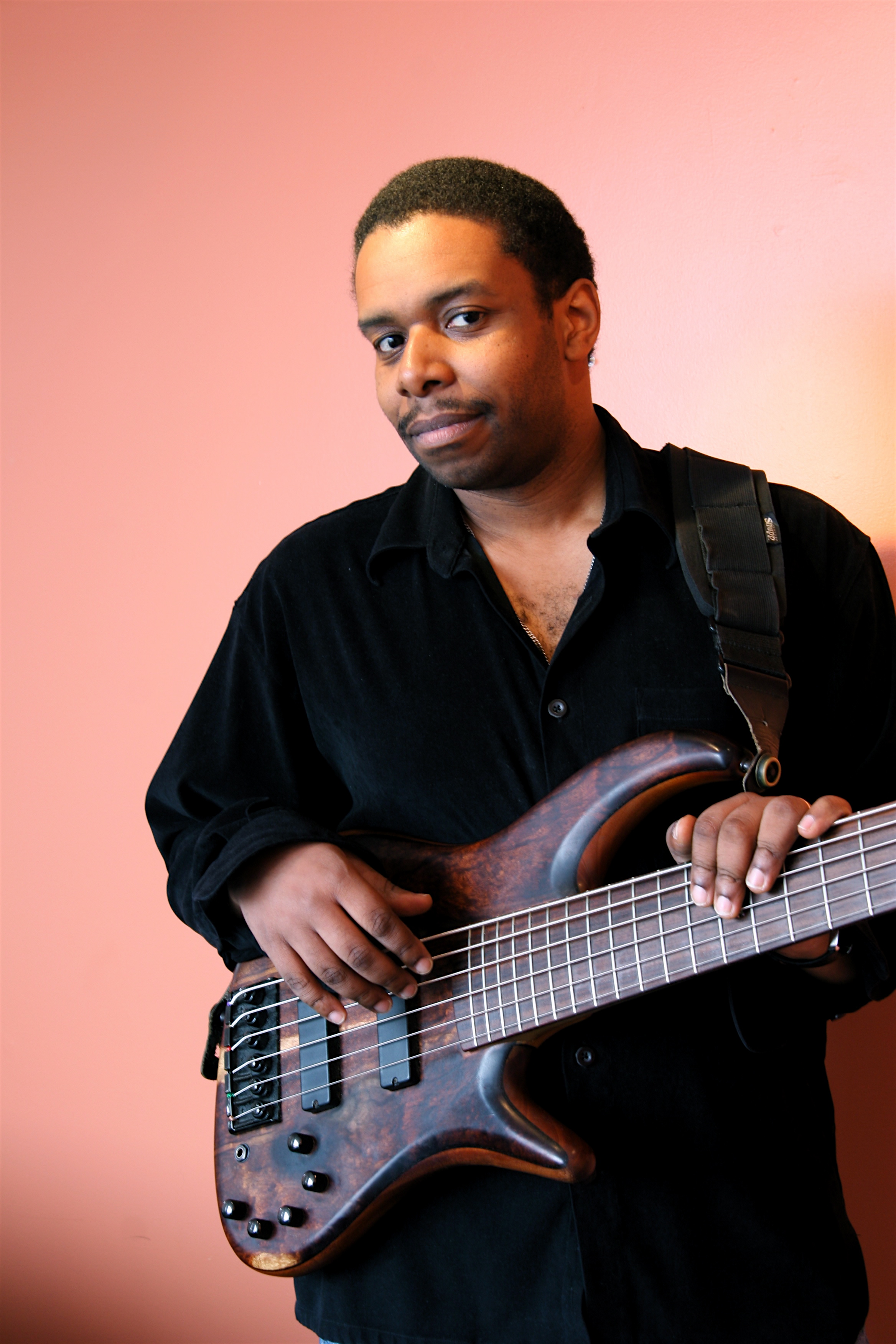 Rich Brown has been an active member in
Toronto’s culturally diverse music scene since 1992. He taught himself
to play bass at the age of 17 by listening to artists such as Jaco
Pastorius, Victor Bailey, Jimmy Haslip, and Alain Caron. Later, he
expanded his vocabulary by drawing on influences outside the bass
realm. In a recent interview Brown explains, “I wanted to sing like
Stevie, play like Miles, and phrase like Scofield and do it all on this
instrument.”
Rich Brown has been an active member in
Toronto’s culturally diverse music scene since 1992. He taught himself
to play bass at the age of 17 by listening to artists such as Jaco
Pastorius, Victor Bailey, Jimmy Haslip, and Alain Caron. Later, he
expanded his vocabulary by drawing on influences outside the bass
realm. In a recent interview Brown explains, “I wanted to sing like
Stevie, play like Miles, and phrase like Scofield and do it all on this
instrument.”
Rich is currently one of the most in demand musicians in
Toronto. He has performed with jazz vocalist Carol Welsman, former Ani
diFranco drummer Andy Stochansky, Glenn Lewis, and Andy Narrell to name
a few. He has appeared in the television series “Soul Food” as well as
on over 30 recordings ranging from Jazz and Latin to traditional Asian
and Arabic music.
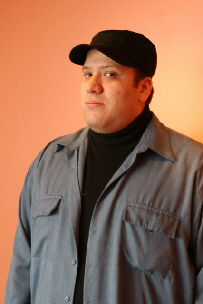 Robert Botos is a self taught jazz pianist based in Toronto, Canada.
Extremely active on the scene from an early age, Robert is in high
demand as a leader and sideman.
Robert Botos is a self taught jazz pianist based in Toronto, Canada.
Extremely active on the scene from an early age, Robert is in high
demand as a leader and sideman.
Born in Nyiregyhaza, Hungary in 1978, Robert moved to Toronto
in 1998. Since that time, Botos has been featured with many of Canada's
foremost jazz artists including: Pat Labarbera (Elvin Jones), Dave
Young (Oscar Peterson), Don Thompson (George Shearing), Terry Clark
(Jim Hall), Norman Marshall Villeneuve (Duke Ellington), Archie Alleyne
(Billie Holiday) and Bob Mover (Chet Baker). He released a self titled
album, “The Botos Brothers”, with brothers Frank (drums) and Louis
(bass, vocal), with all original compositions. As a sideman, he can be
found on numerous CDs with Toronto jazz musicians. In July 2004, he won
First prize and the Public prize at the international Montreux Jazz
Festival jazz solo piano competition, sponsored by TIME magazine.
Past Guest Performers...
James
Blood Ulmer, Guitar
2004
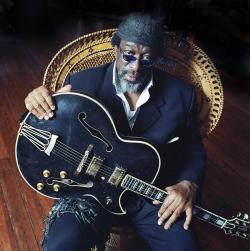
James “Blood” Ulmer is a jazz and
blues guitarist and vocalist most famous for his collaborations with
Ornette Coleman in the late 1970s and early 1980s. As a guitarist,
Ulmer’s reverance for the blues tradition is obvious, but he takes off
from that platform in many directions, often using the complex musical
theory of Ornette Coleman’s harmolodics. “Are You Glad to Be in
America”, an early vocal favorite, predicted well his foray into nearly
straightahead blues covers in the early 2000s
His last several albums have been
in close collaboration with guitarist Vernon Reid. While most noted as
the feral funk/hard rock experimentalist with Living Colour, Reid is a
session heavy hitter and producer, as well as having done a long stint
with post-Ornette Coleman spin off, Ronald Shannon Jackson’s Decoding
Society. Their work has been well received both critically and
commerically.
The two have toured with Shannon Jackson, Melvin Gibbs
(Decoding Society, Rollins Band) and Joseph Bowie (Defunkt) recently as
the Punk-Funk All Stars. They have also worked with long time Ulmer
drummer, Aubrey Dayle, as a guest performers in Dayle’s group My id.
The id: the
unconscious source of psychic energy derived from instinctual needs and
drives
“The Canadian immigrant experience is shared by many but
reflects as much diversity as do those individuals, who seek in Canada,
what they have not found elsewhere. This project is the beginning of my
personal journey toward understanding what immigrating to Canada has
meant to me and to my family. Beneath its established cultural and
social radar, Canada is changing radically and no one knows for sure
what the result will be. This future is for everyone.
As a small boy newly arrived in Canada from warm and
sympathetic Jamaica, I was immediately confronted with the thudding
realization that I was an outsider. At the age of three I had no
context , no experience , no defenses. At the age of five I listened to
Mrs. Harris tell the class about mud huts and say “Aubrey, that’s what
houses look like where you come from.” My skin and my hair, it seems,
had left her with no option but to make assumptions about me. It was an
alarming sign of things to come.
My sisters, proud and beautiful, taught me the value of being
black in a world where no one outside my house looked like me. They had
the power big sisters have to be cool and remote yet wise and loving.
When I lost Charmaine in 2001, lost a thick layer of protection. Once
she was gone I became a bit more of a man, but in that becoming the
small boy was once again revealed.
I confronted the space Charmaine left behind and came face to
face with the culture of my past. As happy as my childhood had been, a
stream of fear had run through it assimilating into the white whole had
seemed my only choice, my only desire, yet I had felt menaced be it.
Being so glaringly different made me feel like a target and too often,
someone took a shot. Like everyone, I just wanted to fit in and
eventually I did. But had this prepared me for when I once again became
an immigrant by moving to New York City? Not really. I had not been
equipped to have the tables turned, to have my Blackness made suspect
by the Canadian-ness I had earlier sought. And in either country, I
still ‘fit the description’.
In 1982, Charmaine narrated and helped produce a National Film
Board of Canada film called “Home Feeling: A Struggle for a Community”
in which she recorded the reality of immigrant and ethnic integration
in an Ontario public housing community in the Jane and Finch area of
Toronto. She and her colleagues sought to shine a light on a
neighbourhood whose name was and still is synonymous with crime and
poverty. With my id, I wish to hour her and continue her work in my own
way. I also wish to hour my gifts and ambition by stepping forward and
putting myself at risk. It has been a struggle in every possible way,
but it has brought out the best in me and in those who believe in me.”
My id: the
conscious musical illustration of my instinctual needs and drives
-- Aubrey --
 Aubrey Dayle was born in Kingston, Jamaica. He
immigrated to Canada with his family, and was raised in Montreal. He
began playing the accordion at age 5 and from there learned to play the
piano. By the age of 13, Aubrey had developed an interest in the
percussive arts and decided to devote his talents to mastering them.
His efforts paid off and a decade later, he was performing and
collaborating with some of the best musicians on the planet.
Aubrey Dayle was born in Kingston, Jamaica. He
immigrated to Canada with his family, and was raised in Montreal. He
began playing the accordion at age 5 and from there learned to play the
piano. By the age of 13, Aubrey had developed an interest in the
percussive arts and decided to devote his talents to mastering them.
His efforts paid off and a decade later, he was performing and
collaborating with some of the best musicians on the planet. Vernon Reid was born in London, England August
22, 1958 but spent most of his childhood in Brooklyn, New York. He grew
up listening to an eclectic variety of pop music ranging from Dionne
Warwick's hits to the Temptations. As a guitarist of the Decoding
Society, Mr. Reid mastered the harmolodic theories of Ornette Coleman
and spent his time gigging with a wide array of artists ranging from
pop producer Kashif to the jazz-punk-dance band Defunkt. Living Colour
began as a trio in 1984, releasing five albums: the ground breaking
“Vivid” (1988), “Times Up” (1990), the EP “Biscuits” (1991), “Stain”
(1993) and the latest “Collideoscope” (2003). With over four million
records sold worldwide, the band has won numerous awards including two
Grammy awards, two MTV Music Video Awards, two International Rock
Awards and several New York Music Awards.
Vernon Reid was born in London, England August
22, 1958 but spent most of his childhood in Brooklyn, New York. He grew
up listening to an eclectic variety of pop music ranging from Dionne
Warwick's hits to the Temptations. As a guitarist of the Decoding
Society, Mr. Reid mastered the harmolodic theories of Ornette Coleman
and spent his time gigging with a wide array of artists ranging from
pop producer Kashif to the jazz-punk-dance band Defunkt. Living Colour
began as a trio in 1984, releasing five albums: the ground breaking
“Vivid” (1988), “Times Up” (1990), the EP “Biscuits” (1991), “Stain”
(1993) and the latest “Collideoscope” (2003). With over four million
records sold worldwide, the band has won numerous awards including two
Grammy awards, two MTV Music Video Awards, two International Rock
Awards and several New York Music Awards. Richard Underhill’s fantastic sound,
composition skills and improvisational ability make him one of the most
artistically recognizable artists in Canada. His 2003 CD entitled
“Tales from the Blue Lounge” earned him a Juno Award, followed by
another Juno award in 2008 for his “Kensington Suite” CD. Richard has
worked with a vast array of artists including the likes of Rob
McConnell, Molly Johnson, Blue Rodeo, Colin James, Hawklsey Workman,
Alex Lifeson, Taj Mahal and many others. He is also a founding member
of one of Canada's most cherished groups, the Shuffle Demons.
Richard Underhill’s fantastic sound,
composition skills and improvisational ability make him one of the most
artistically recognizable artists in Canada. His 2003 CD entitled
“Tales from the Blue Lounge” earned him a Juno Award, followed by
another Juno award in 2008 for his “Kensington Suite” CD. Richard has
worked with a vast array of artists including the likes of Rob
McConnell, Molly Johnson, Blue Rodeo, Colin James, Hawklsey Workman,
Alex Lifeson, Taj Mahal and many others. He is also a founding member
of one of Canada's most cherished groups, the Shuffle Demons. Rich Brown has been an active member in
Toronto’s culturally diverse music scene since 1992. He taught himself
to play bass at the age of 17 by listening to artists such as Jaco
Pastorius, Victor Bailey, Jimmy Haslip, and Alain Caron. Later, he
expanded his vocabulary by drawing on influences outside the bass
realm. In a recent interview Brown explains, “I wanted to sing like
Stevie, play like Miles, and phrase like Scofield and do it all on this
instrument.”
Rich Brown has been an active member in
Toronto’s culturally diverse music scene since 1992. He taught himself
to play bass at the age of 17 by listening to artists such as Jaco
Pastorius, Victor Bailey, Jimmy Haslip, and Alain Caron. Later, he
expanded his vocabulary by drawing on influences outside the bass
realm. In a recent interview Brown explains, “I wanted to sing like
Stevie, play like Miles, and phrase like Scofield and do it all on this
instrument.” Robert Botos is a self taught jazz pianist based in Toronto, Canada.
Extremely active on the scene from an early age, Robert is in high
demand as a leader and sideman.
Robert Botos is a self taught jazz pianist based in Toronto, Canada.
Extremely active on the scene from an early age, Robert is in high
demand as a leader and sideman.